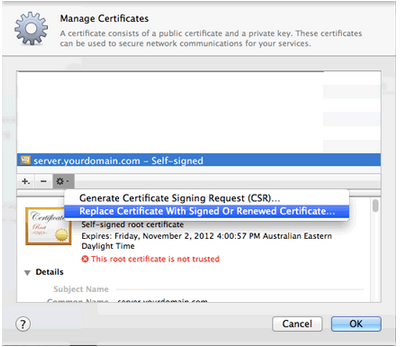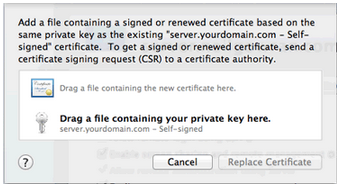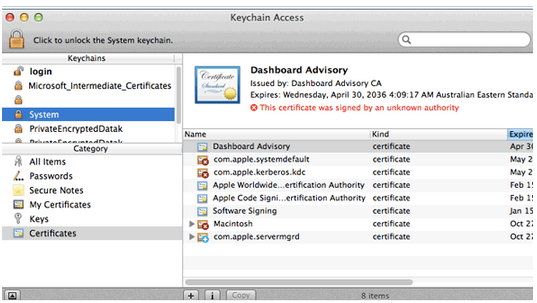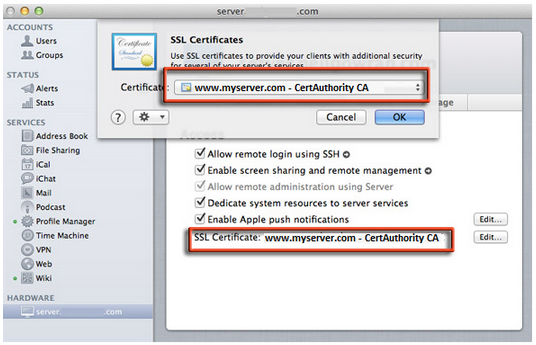Like the majority of server systems you will install your SSL certificate on the same server where your Certificate Signing Request (CSR) was created.
Your private key will always be left on the server system where the CSR was originally created. Your SSL certificate will not work without this private key file. We will assume that this is the original system.
To Install your SSL certificate on a Mac OS X 10.6 system perform the following.
Step 1: Downloading your SSL Certificate & its Intermediate CA certificate:
- If you had the option of server type during enrollment and selected Other you will receive a x509/.cer/.crt/.pem version of your certificate within the email. Alternately you can access your Certificate User Portal by the supplied link in the email to pick up the x509 version of your certificate.
- Copy the SSL certificate and make sure to copy the —–BEGIN CERTIFICATE—– and —–END CERTIFICATE—– header and footer Ensure there are no white spaces, extra line breaks or additional characters.
- Use a plain text editor such as Notepad, paste the content of the certificate and save it with extension .crt
- If your intermediate CA certificate for your product is not in the body of the email you can access your Intermediate CA also in a link within that email. Copy and paste the contents of your Intermediate CA into its own Notepad file and save it with a .crt extension also.
Note: Some CAs may require two intermediates for best compatibility. These two are to be copied within their own corresponding .crt files and installed one at a time in a repeated process for intermediate installation.
Step 2: Importing your SSL Certificate:
- Start Server Admin and connect to your server.
- Click Certificates.
- Choose the certificate for ‘your.domain.com – Self-signed’, and click the Gear and from the Actions menu choose Replace Certificate with Signed or Renewed Certificate.
- Drag your new SSL certificate .crt file into the window. Click the Replace Certificate.

- Drag your new SSL certificate .crt file into the window. Click the Replace Certificate.

Your SSL Certificate should now be installed.
Step 3: Importing your Intermediate CA:
- Open Keychain Access by click on Go in the Finder menu and select Utilities
select the KeyChain Access.
- With the Keychain Access window open, go up to the Keychain Access menu at the top and select File and then click on Import Items.
Note: Alternately you can also just drag your Intermediate CA .crt file into the certificates listed in the System Keychain, Click Add then authenticate as the administrator to authorize the change.
Your Intermediate CA certificate should now be installed.
Step 3: Assign the SSL Certificate to your website:
- In the Setting tab next to SSL certificate click Edit.
- Select your new SSL Certificate for your domain and click Ok.
- At the prompt “Do you want to restart Web now?” Choose Yes.

Your SSL certificate is now installed and configured on the website.
If you are unable to use these instructions for your server, Acmetek recommends that you contact either the vendor of your software or the hosting organization that supports it.
Apple Support:
For support refer to Mac



